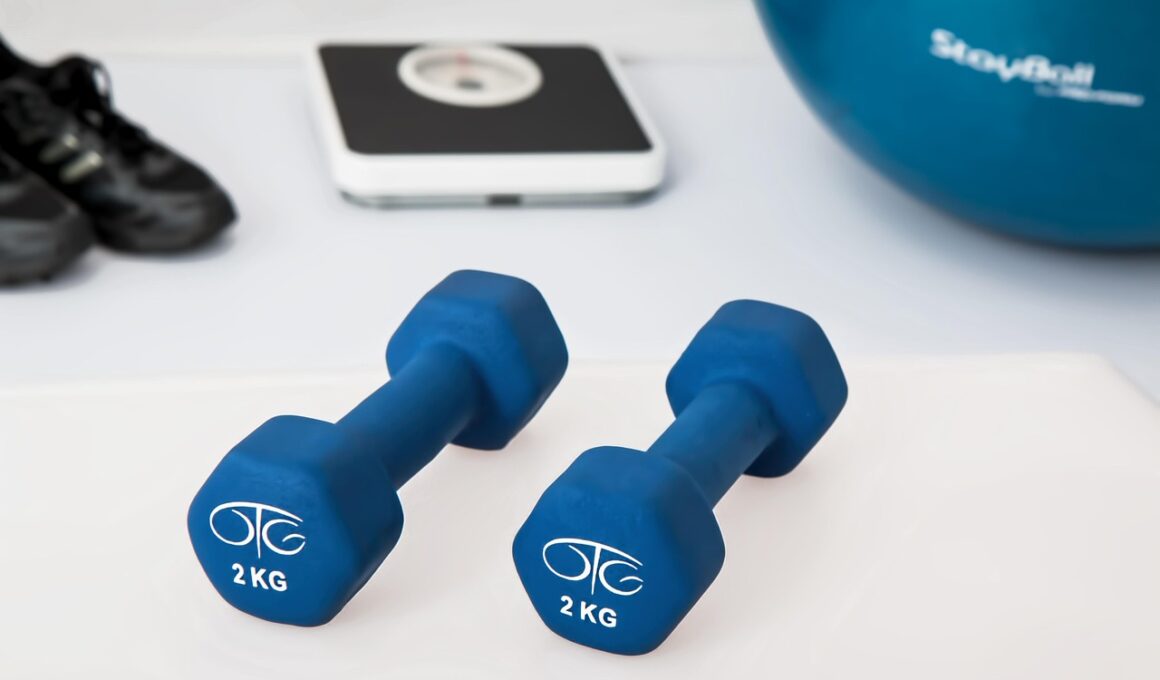Physiological Implications of Exercise in Hypobaric Hypoxia
Hypobaric hypoxia, encountered at high altitudes, presents unique physiological challenges during exercise. In such environments, the atmospheric pressure decreases, reducing the partial pressure of oxygen. This drop in oxygen availability directly affects aerobic metabolism, translating into diminished exercise performance. Athletes often experience rapid changes in their physical condition when subjected to hypobaric conditions, particularly when engaging in rigorous competition or training. A crucial response mechanism involves increased ventilation, allowing for greater oxygen uptake, but this adaptation may not fully counteract the reduced oxygen available for cellular respiration. Furthermore, the body begins to compensate with increased heart rate, enhancing blood flow to vital organs and muscles. Interestingly, these responses can also trigger beneficial adaptations over time, leading to improved overall endurance. Nevertheless, excessive exercise in hypobaric hypoxia can result in acute mountain sickness, characterized by headache, nausea, and fatigue. Therefore, it’s essential for individuals, especially athletes, to acclimatize gradually to these extreme environments. Understanding these physiological implications is vital for optimizing performance and ensuring health in hypobaric conditions, pushing the boundaries of human capabilities while maintaining safety.
Oxygen Transport and Delivery
The ability of the human body to adapt to hypobaric hypoxia significantly hinges on the efficiency of oxygen transport and delivery mechanisms. Hemoglobin plays a central role in this process, as it binds oxygen in the lungs and releases it to tissues throughout the body. In hypobaric conditions, the decreased oxygen levels lead to an increase in erythropoietin, stimulating red blood cell production. This heightened production enhances the oxygen-carrying capacity of the blood. Furthermore, adaptation may involve alterations in blood flow patterns, where the body shunts blood toward vital organs, prioritizing them over less essential areas during exercise. Capillary density in muscles may also increase with prolonged exposure to high altitudes, maximizing oxygen diffusion at the cellular level. Effective oxygen delivery depends not just on the quantity of red blood cells but also on their ability to release oxygen efficiently, impacted by factors like pH and temperature fluctuations in the body. These adaptations can be incredibly beneficial for athletic performance, allowing individuals to maintain higher intensities of exercise despite lower ambient oxygen availability. Overall, adapting oxygen transport is crucial for coping with hypobaric hypoxia.
In addition to modifications in oxygen transport, the impact of hypobaric hypoxia on energy metabolism is vital during exercise. Under normal conditions, aerobic metabolism predominates, facilitating efficient energy production through oxidative phosphorylation. However, in hypobaric environments, with reduced oxygen availability, the body may transition towards anaerobic metabolism. This switch can lead to increased lactate production, especially during high-intensity workouts, resulting in muscle fatigue and decreased overall performance. While some athletes may capitalize on these physiological changes, others might struggle to adapt effectively, leading to suboptimal training results. An understanding of the balance between aerobic and anaerobic energy pathways becomes pivotal for individuals engaging in hypoxic conditions. Traditional training methods may need adjustments to accommodate these new energy demands. Moreover, nutritional considerations, including carbohydrate intake, can influence the effectiveness of anaerobic metabolism. Coaches and athletes ought to consider specific strategies to enhance recovery and performance under hypobaric conditions. Ultimately, recognizing these metabolic adaptations enables athletes to maximize their training outcomes in challenging environmental situations, transforming obstacles into opportunities for growth and improvement in performance.
Acclimatization Strategies
Acclimatization emerges as a pivotal strategy for mitigating the adverse effects of hypobaric hypoxia during exercise. Gradual exposure to high altitudes allows the body to undergo necessary physiological adjustments, enhancing survival and performance capabilities. Typically, acclimatization protocols may extend over several days to weeks, fostering improvements in ventilation and circulation. Athletes may benefit from incorporating altitude training camps into their preparation regimens, allowing for controlled exposure to lower oxygen levels while engaging in various sports. During this transition, modifying training intensity becomes essential, with an emphasis on lower intensities to reduce the risk of overexertion and associated complications. Monitoring hydration status and maintaining optimal nutrition are critical components of any acclimatization plan, as dehydration exacerbates the effects of hypoxia. Additionally, the use of supplemental oxygen during high-intensity training sessions can be considered to provide support to the muscles when they require immediate energy. Knowledge of individual thresholds for hypoxia can guide tailored approaches, ensuring that athletes adapt effectively. An awareness of these acclimatization strategies can equip individuals with strategies to optimize their performance and health in hypobaric environments.
Physical training in hypobaric hypoxia promotes not only physiological adaptation but also psychological resilience. The mental component of training is often overlooked yet plays a key role in performance, particularly under challenging conditions. Conditions of reduced oxygen availability can be mentally taxing, affecting athletes’ motivation, focus, and overall confidence. Hypobaric hypoxia training can, however, instill a robust mindset, as athletes learn to cope with discomfort and unpredictability. Mental strategies such as visualization, mindfulness, and stress management techniques can enhance performance by improving mental clarity and focus during periods of hypoxic strain. Furthermore, building a positive mindset towards discomfort during these sessions can reflect in competitions, fostering a sense of preparedness and adaptability. Regular exposure to these atmospheres conditions both the body and the mind, breaking down psychological barriers that inhibit performance in standard environments. Additionally, the implementation of team-building exercises acclimates athletes socially and enhances camaraderie in challenging conditions, instilling collective determination. Understanding the intricate interplay between physical and psychological factors during hypoxic challenges ultimately contributes to holistic training approaches for athletes competing in extreme environments.
Recovery Implications
Recovery is a crucial aspect that deserves significant attention after engaging in exercise under hypobaric hypoxia. The physiological toll exerted by hypoxia manifests in fatigue, muscle damage, and delayed recovery processes. Athletes who train in these conditions must prioritize recovery strategies to support their physical demands and enhance adaptations. Effective post-exercise recovery strategies may include hydration, proper nutrition, and sleep quality to mitigate the effects of hypoxia. Incorporating active recovery sessions enables enhanced blood flow to facilitate healing and nutrient delivery to muscles. The immune system may also experience strain due to altitude exposure, making it critical to fuel the body with micronutrients essential for immune health. Additionally, practices such as compression therapy and contrast baths can aid in reducing muscle soreness and inflammation after intense training sessions. Understanding the recovery window becomes vital, as athletes may require more time to recuperate at high altitudes. Comprehensive recovery programs must be holistic, addressing both physical and mental fatigue. By focusing on recovery, athletes can maximize the benefits of their training while minimizing the negative impacts of hypobaric hypoxia.
In conclusion, the physiological implications of exercise in hypobaric hypoxia highlight the complex interplay between environmental factors and human performance. Understanding adaptations related to oxygen transport, energy metabolism, acclimatization, mental resilience, and recovery is essential for athletes aiming to optimize their performance in extreme conditions. While the challenges presented by hypobaric hypoxia are significant, effective strategies for training, acclimatization, and recovery support athletes in navigating these environments. The potential for beneficial adaptations over time ensures that hypobaric training becomes a valuable component of athletic preparation. As scientists and coaches continue to explore these avenues, athletes can leverage their newfound knowledge to enhance their training regimens and ultimately achieve greater heights within their respective sports. Embracing the demands of hypobaric hypoxia prepares athletes not only for competitive success but also strengthens their ability to confront diverse challenges in their athletic pursuits. Cultivating a comprehensive understanding of physiological responses and training strategies remains crucial for anyone engaged in sports science, particularly concerning the specialized field of environmental physiology.
Ultimately, the lessons learned from the implications of exercise in hypobaric hypoxia extend beyond sports. They provide valuable insights into human adaptation in extreme environments, informing professionals across various fields, including medicine, rehabilitation, and performance enhancement. In essence, hypobaric hypoxia serves not only as a critical challenge for athletes but also reveals fundamental principles of human physiology. The adaptation mechanisms developed through training can enhance performance in various functional tasks, making them applicable across daily activities. As research continues to evolve, innovative training techniques integrating hypobaric conditions may emerge, creating new opportunities for performance enhancement. Continuous study into the varying responses to hypobaric hypoxia will broaden our understanding not just for elite athletes but for anyone engaging in physical activity at altitude. This knowledge ultimately empowers individuals of all fitness levels to harness their potential in the face of environmental challenges. By incorporating these findings, the sports science community can develop more effective and safer training routines tailored for high-altitude athletes, ensuring their preparedness for competitions and promoting health and longevity in sports participation.


